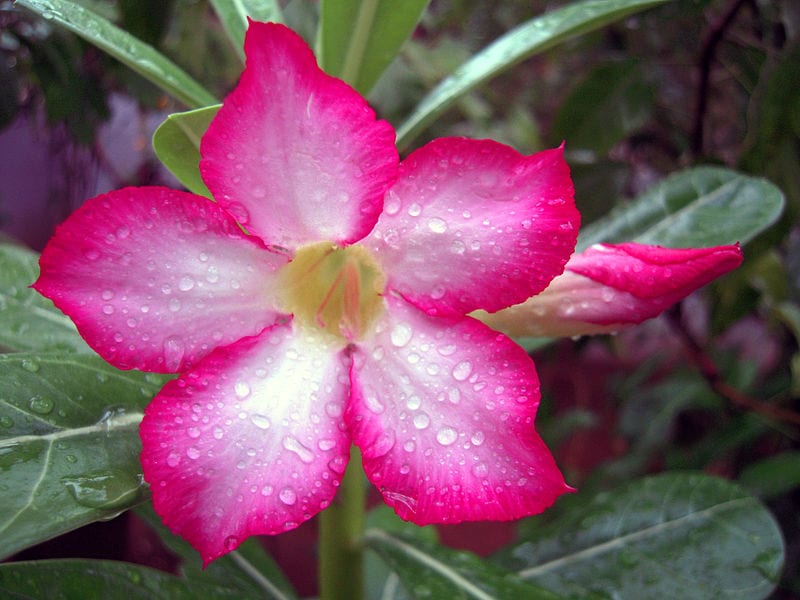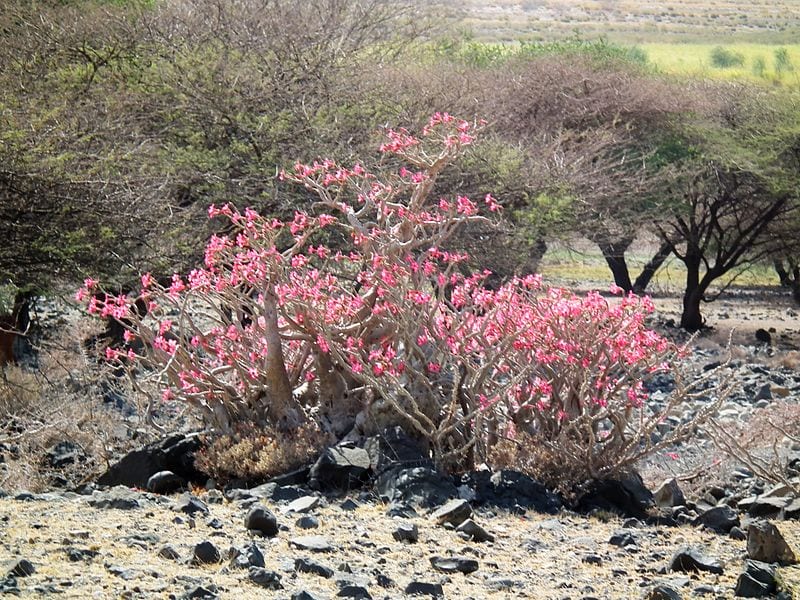
It is probably the best known caudex or deciduous plant in the world: the desert rose or Adenium obesum it's beautiful no, the following. It also has a characteristic that makes everyone who sees it fall in love: it flourishes when very young!
The problem is that it is not very easy to take care of if the weather is not good. But don't worry what By following my advice you will be able to get him to hold you well
How is it?

Adenium obesum is the scientific name of a plant with caudex native to the tropical and subtropical east and south of Arabia and Africa. It is popularly known as Desert Rose, Winter Rose, Sabi Star or Kudu. It was described by Peter Forsskal, Johann Jacob Roemer, and Josef August Schultes and published in Systema Vegetabilium in 1819.
Reaches a height of 1-3 meters, with simple and whole leaves, leathery in texture, with a size of 5-15cm in length by 1-8cm in width. The flowers are tubular, 2-5cm long and are composed of five petals 4-6cm in diameter. These appear in spring and can be pink, red or white.
Subspecies
- Adenium obesum subsp. boehmianum: native to Namibia and Angola.
- Adenium obesum subsp. obesity: native to Arabia.
- Adenium obesum subsp. oleifolium: native to South Africa and Botswana.
- Adenium obesum subsp. socotranum: native of Socotora.
- Adenium obesum subsp. Somali: native to East Africa.
- Adenium obesum subsp. Swazicum: native to eastern South Africa.
What special care do you need to live?

And now that we know how it is, it is time to know how to take care of it. Well, the first and most important thing to keep in mind is that the desert rose is a plant that does not resist frost. This means that we will not be able to grow it outside all year round if the temperatures drop below zero degrees in winter. But then, How do we prevent it from dying?
For this you have to water it very little throughout the year: once a week and every 15-20 days the rest of the year. As soon as the thermometer begins to mark 10ºC or less we will make a greenhouse for it - with an old shelf and transparent plastic is more than enough - and we will start watering once a month. I do not advise keeping it indoors unless in our area there are frosts of -3ºC or more intense, since it does not adapt well to living in these conditions.

Another thing we have to do is have it in a pot with substrate that is able to filter the water quickly. To do this, I advise planting it in pumice, which is a type of gravel but with a much smaller white grain. Likewise, during the spring and especially the summer you have to fertilize it with a liquid fertilizer for cacti and other succulents, or if you want with blue nitrophoska.
The transplant must be done in spring, as soon as the heat of that season has been established. It is very resistant, but you have to be careful with its roots and do not water it until about 15 days have passed.
This way you will have a better chance of survival.
If you have any doubts left in the pipeline, ask. 🙂
Very good article, very useful
We are glad you liked it 🙂